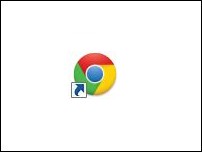 [German]Do you facing the problem that the Windows Admin Center is not displayed on the first call in Google Chrome? Rather, you get a message that the page cannot be reached ("ERR_UNEXPECTED"). A second attempt then displays the Windows Admin Center. This can also happen with other websites.
[German]Do you facing the problem that the Windows Admin Center is not displayed on the first call in Google Chrome? Rather, you get a message that the page cannot be reached ("ERR_UNEXPECTED"). A second attempt then displays the Windows Admin Center. This can also happen with other websites.
Windows Admin Center is a locally deployed, browser-based app for managing Windows servers, clusters, hyperconverged infrastructure, and Windows 10 PCs. It is a free product, ready to use in production environments, and can be downloaded from Microsoft.
Chrome fails always the 1st time
The issue can be described in short: The first time you try to reache a website likte the Windows Admin Center, locally in the Google Chrome browser, an error "This site can't be reached" (ERR_UNEXPECTED) is shown. A refresh then brings up the Windows Admin Center or an other web page.
In the above tweet, Marc-André Moreau takes up the question of why this happens when a website is loaded through a SOCKS5 proxy on the local host, and then the same website is reloaded with success? He investigated the question and writes that he found the reason why Chrome issues the message "This page cannot be reached" (ERR_UNEXPECTED) when it first loads the Windows Admin Center.
The built-in Windows authentication does not support HTTP/2 and causes an HTTP/1.1 error on the server. The next access attempt then reloads the page of the with HTTP/1.1. If he calls the Chrome browser with –disable-http2, the Windows Admin Center is loaded on the first attempt without having to reload it.

This is described at Microsoft in the article Configure Windows Authentication in ASP.NET Core. Marc-André Moreau writes that HTTP/2 does nothing for the Windows Admin Center (HTTP/1.1 is fine). But the real problem is that Chromium-based browsers don't properly handle the downgrade from HTTP/2 to HTTP/1.1 when using built-in Windows authentication.
Moreau hasn't yet figured out how to force a specific site to load with HTTP/1.1 instead of disabling HTTP/2 for the entire browser. I then came across this page that describes how to disable HTTP/2.




